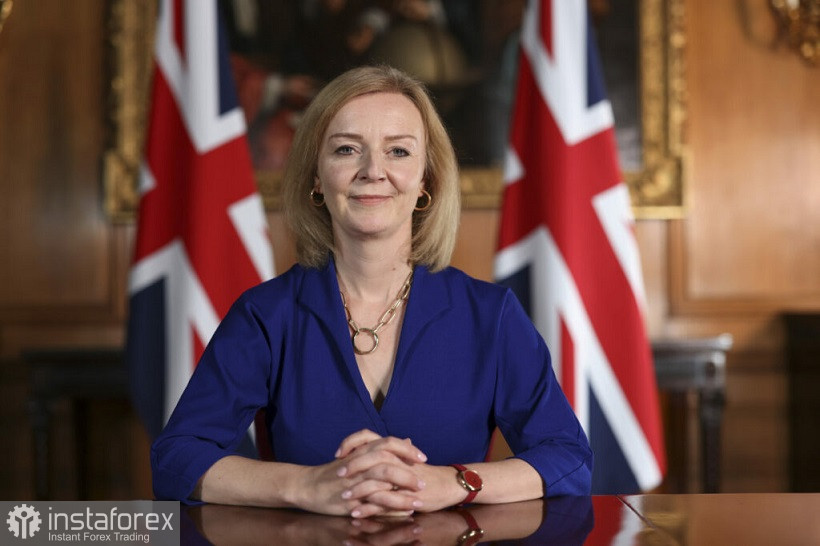The pound paired with the dollar is trying to stay above the 1.1000 mark, despite the renewed downward trend. Over the past two weeks, GBP/USD bulls have managed to win back a significant part of the lost positions: if on September 26, the price updated the historical low, collapsing to the level of 1.0345, then on October 4, the pair rose to a local high of 1.1488. There have been no such price "flights" for more than six years, that is, since the results of the referendum on the UK's withdrawal from the EU were announced in 2016. Such volatility is caused not only by the strengthening/weakening of the greenback, but also by the behavior of the British currency. Moreover, the GBP/USD pair collapsed at the end of September precisely due to the devaluation of the pound, while the dollar played a rather secondary role in this process.

As you know, the pound has suffered due to new economic initiatives on the part of the new UK government. Tax cuts for wealthy citizens and subsidizing energy prices – it was these proposals of the British Ministry of Finance that provoked a serious resonance not only in Great Britain, but also beyond its borders. According to preliminary estimates, the proposed package of economic measures would cost the British budget 45 billion pounds. It is also necessary to add spending on energy subsidies to this amount. According to a number of experts, these subsidies will not only increase the country's debt burden (by approximately 100 billion pounds), but also offset the promoted incentives to reduce energy and fuel consumption. Moreover, the "temporary" subsidization of energy prices is fraught with the fact that such measures are de facto very difficult to cancel after they have already been introduced and "accepted" by the population.
After a barrage of criticism from the opposition (Labour), a number of influential conservatives, European politicians, officials, the leadership of the IMF and representatives of major international rating agencies (in particular, Moody's), British Prime Minister Liz Truss retreated. Downing Street reported that the Ministry of Finance refuses to lower the tax from 45% to 40% for those whose annual earnings exceed 150,000 pounds. According to the country's Finance Minister, Kwasi Kwarteng, this decision was made with "humility and remorse" after some members of the House of Commons "reacted with fury to the proposal to cut government spending and social security spending to finance tax cuts for the richest."
The pound followed on the heels of the information flow regarding the fate of the anti-crisis package. When it became known that the British Ministry of Finance was ready to revise the most odious points of its plan, the pound strengthened its position throughout the market. The pound was also supported by information that the Conservatives are ready to initiate a vote of no confidence in the prime minister, and even took the first steps in this direction – 12 Tory deputies sent written appeals to the so-called "1922 Committee" to consider this issue. By and large, Liz Truss could have called early elections in order to get a broader mandate to carry out her policies – as Theresa May did at the time. But, given the decline in the ratings of the Conservative Party (in recent opinion polls, Labour is significantly ahead of the Conservatives), instead of the election, Truss backed down, refusing the most resonant step, namely, a tax cut "for the richest."

In the wake of this information hype, the GBP/USD pair crept up to the borders of the 15th figure (1.1488), but could not stay at the occupied height. First, Truss retained her position despite internal party pressure from influential Tories. Finance Minister Kwasi Kwarteng also retained his position, under whose supervision, in fact, the high-profile anti-crisis plan was developed.
Secondly, the pound came under pressure from the greenback, which began to gain momentum throughout the market at the end of last week. After the release of fairly strong Nonfarm data (unemployment in the US fell to 3.5%, and the average hourly wage rose by 5.0% y/y), the probability of a 75-point increase in the Federal Reserve's interest rate at the November meeting rose to almost 80%. The growth of geopolitical tensions only increased the demand for the US currency, which enjoys the status of a protective asset.
In other words, the GBP/USD bears quite reasonably seized the initiative, while the optimism of the bulls was a priori temporary and very unsteady. All this suggests that short positions on the pair are in priority, especially in anticipation of important inflationary releases, which will be published this week in the US.
Nevertheless, it is advisable to enter short positions only after GBP/USD bears overcome the psychologically important support level of 1.1000, which corresponds to the Tenkan-sen line on the D1 timeframe. In this case, the price will be between the middle and lower lines of the Bollinger Bands indicator, and the Ichimoku indicator will form a bearish Parade of Lines signal. The target of the bearish move will be 1.0900, which corresponds to the lower line of the Kumo cloud on the 4-hour chart.
 English
English 
 Русский
Русский Bahasa Indonesia
Bahasa Indonesia Bahasa Malay
Bahasa Malay ไทย
ไทย Español
Español Deutsch
Deutsch Български
Български Français
Français Tiếng Việt
Tiếng Việt 中文
中文 বাংলা
বাংলা हिन्दी
हिन्दी Čeština
Čeština Українська
Українська Română
Română

